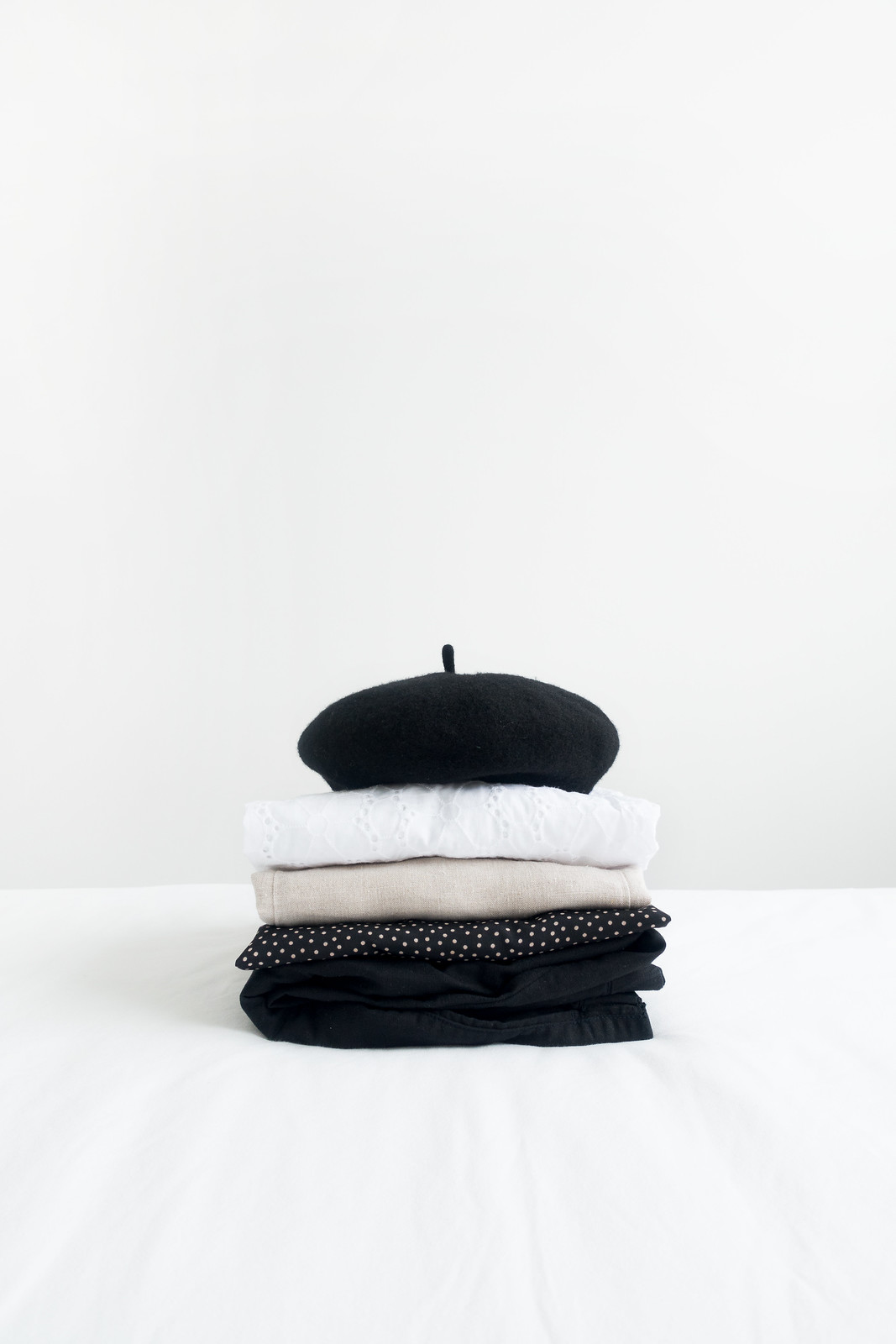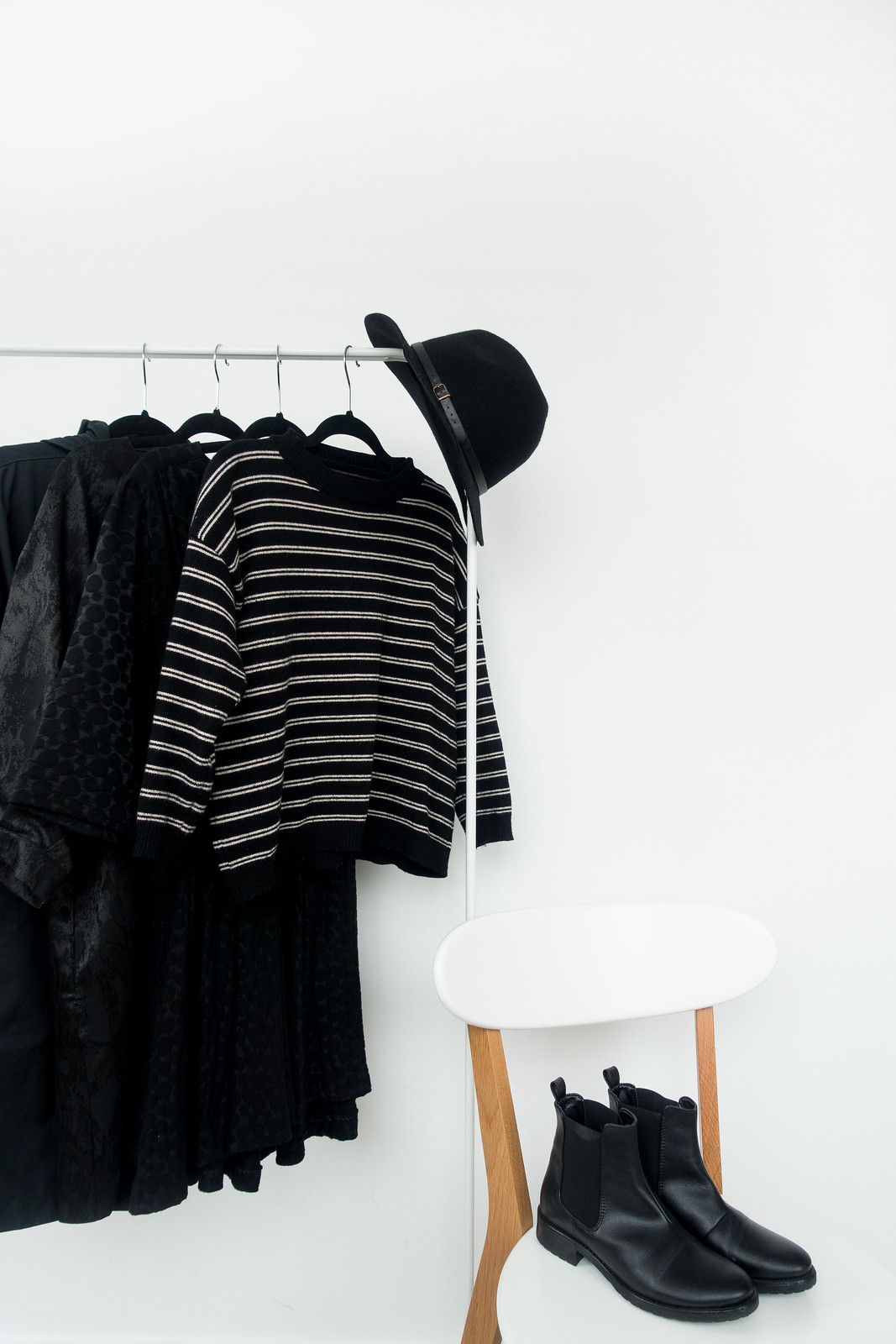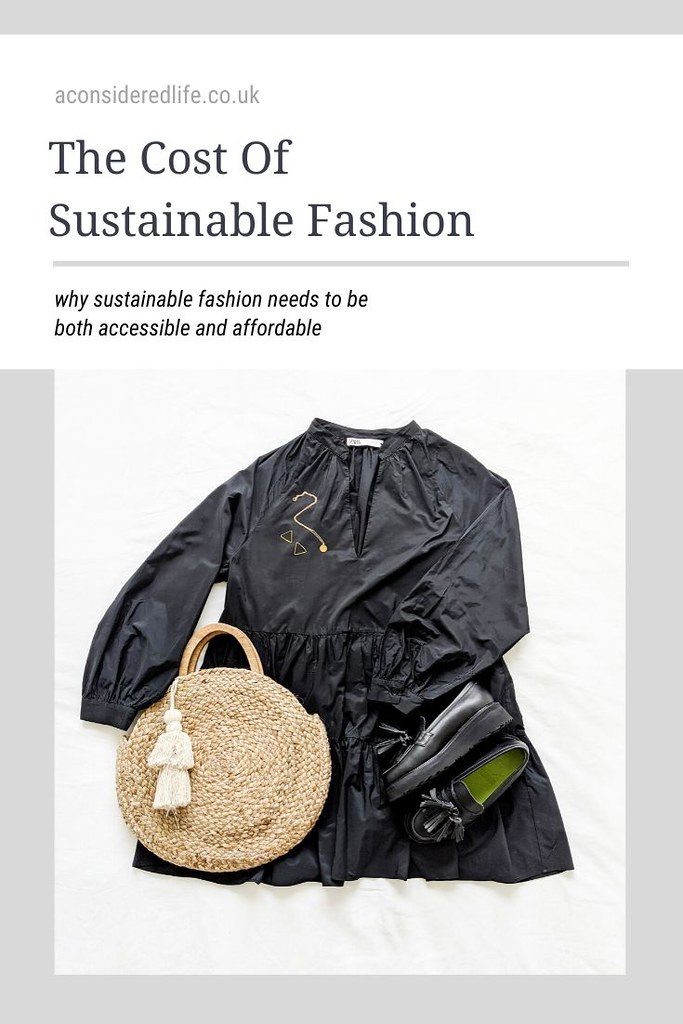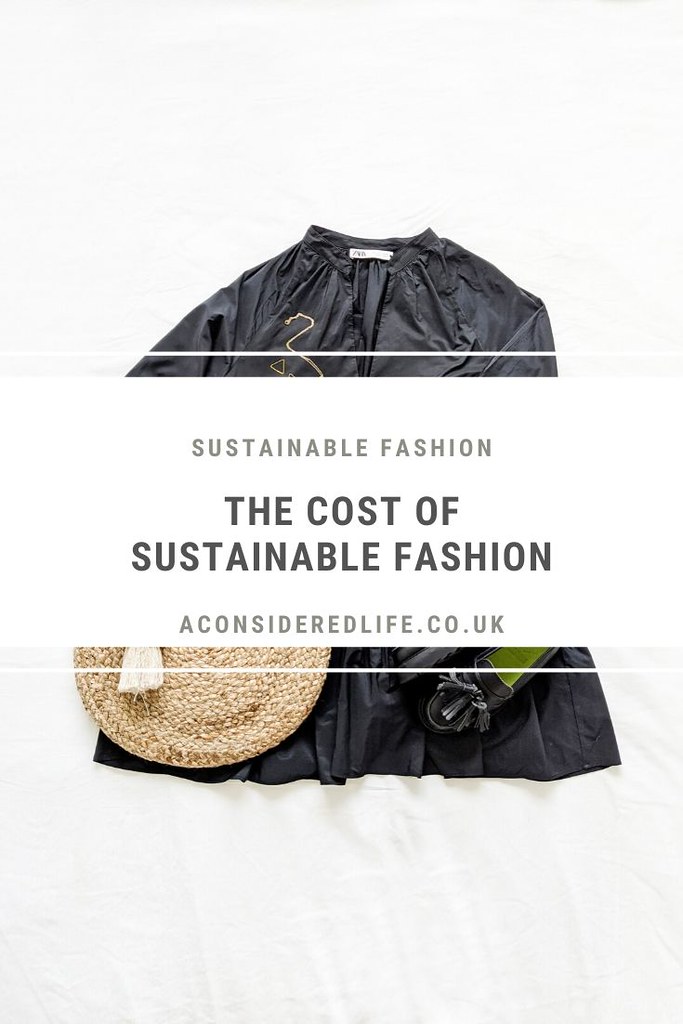
When I'm browsing sustainable clothing, wishfully adding things to my cart, what always drags me back to reality (with a very hard thump) is the price tag. I almost never checkout. I see the total, I abandon my cart, and I head off to an online marketplace or charity shop to find something similar but second-hand knowing the price won't be anywhere near as high. A significant chunk of my wardrobe is pre-owned. I'd love to say that's entirely a choice I've made for environmental reasons but the reality is, like many others I'm doing it because it's cheaper; my budget often can't stretch to pay the price of new sustainably-made clothing.
What does the term 'sustainable style' mean to you? For me it combines a few things: sustainability, inclusivity, style, and price. That last point is a big one.
'Sustainable clothing' refers to clothes that have been manufactured in the most sustainable way possible, taking into account environmental socio-economic concerns, as well as transparency, diversity and inclusion. It's marketed in a way that encourages consumers to adopt more sustainable buying habits.
There are lots of reasons sustainably-made clothing is more expensive than fast fashion; from paying workers a fair wage to sourcing eco-friendly fabrics, sustainable brands strive to create fairly-made, ethically sourced, and sustainably produced clothing - at a 'fair' price in terms of what it costs to produce it.
A less talked about reason that makes sustainable clothing more expensive is small scale production. Many small independent brands are one-person businesses with a made-to-order service. When only a few people are making the clothes, it's less efficient than producing them in a factory and the cost goes up - for the customer. This often limits the sizes and style available, and increases the price.
Making decisions about where we buy our clothes is tricky. If money weren't an option we could all choose to buy ethical clothing if the correct size and style was available to us. But with most sustainable brands selling clothing upwards of £100, that's a huge financial barrier that prices a lot of us out of being able to make a more sustainable choice.

I've worked with brands that sell sustainable yet expensive clothing and have gifted me items from their collection. While some of these items have become staples for me that I love and wear regularly, I could never afford to pay for them (I see a problem there). Even if I saved, spending £200 on one item of clothing is difficult to justify.
Take for example my Elizabeth Suzann Jacket. I love this jacket! I've worn it for years, I wear it through every season, and it's one of the most versatile pieces in my wardrobe. But it cost $285 (£235 - and that's without any import fees)! Do I think it's worth it? That's hard to say. In terms of ethical production? Yes. In terms of price alone? No, I don't think so. I couldn't pay for this jacket with my income.
I've been gifted a Filosofia Chloe dress. It costs $220 to buy and I paid £70 in custom charges bringing the total to £251. That's a lot of money for a dress. It's beautiful and perfect for summer - but too big for me, which is another issue with buying sustainable clothing. Purchasing the wrong size can be very costly. In this situation, I could have sent it back, however, with a lot of smaller independent brands, returns and exchanges can be difficult with made-to-order items.
I have also invested in my wardrobe by making one or two big ticket purchases. These were worth it in terms of buying the exact clothing item I felt my wardrobe was missing in a style and size that suited me. The Tricotage Midi Skirt, which has seen me through many summers, an Ivanna Helsinki Button Down dress, which is my go-to 'little black dress', and more recently a Linenfox midi dress. All were around the £100 mark, nothing close to the heady prices of EZ.

I'm a huge believer in buying less and buying better; saving up and 'investing' in pieces that are fairly-made and you'll wear for years. I've even encouraged you to do that many times on my blog. Yet I've realised, we all have our own ceiling when it comes to price. For me and many others, most sustainably-made clothing by smaller brands is completely out of a comfortable price range. I could save and save and save and still not be able to justify spending upwards of £200 on a single item of clothing. I'm sure a lot of you are in a similar situation too.
Ethical fashion might be sustainably-made but it's not sustainable if most people can't afford it. I don't believe inclusivity should be solely about providing clothing for larger bodies, it should be about providing for all bodies, and inclusivity should extend to cost too. I understand there are difficulties with doing that when brands are producing clothing in small batches even if that's carried out in the most sustainable way possible.

Most of us make compromises about the places we shop because shopping ethically and sustainably is really difficult especially when it comes to affordability. It highlights the need for those brands that fall somewhere in-between. Where production isn't on a tiny scale but in a factory; where materials are sourced from suppliers that you have to put your trust in to be honest about where they come from; where price is more affordable but not every part of the supply chain can be traced. These are the brands that are more likely to provide a range of sizes and styles at a more affordable price.
There are, of course, issues with this and compromises end up needing to be made. The cost of sustainable clothing (in styles and sizes that suit) prices a lot of people out of this choice. The affordability of other brands whose sustainability credentials aren't as clear, means more people can make better choices than buying fast fashion.
There's a balance to be struck between sustainability, inclusivity, style, and price. If you're able to, invest in the most sustainably-made clothing you can. If you're not able to, look for the most affordable option available to you. Fortunately there are quite a lot of sustainable fashion brands to choose from. Something many of us can all do though is: buy less and shop second-hand more often.

